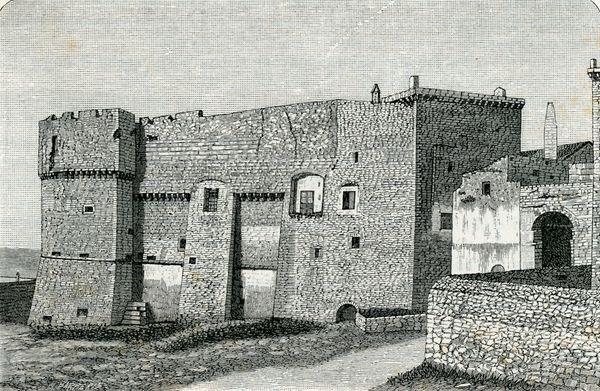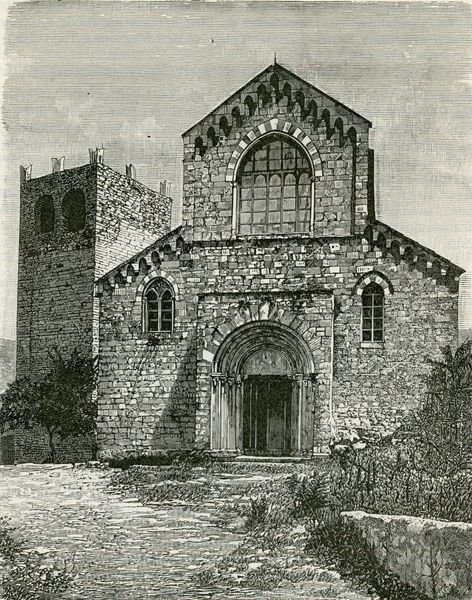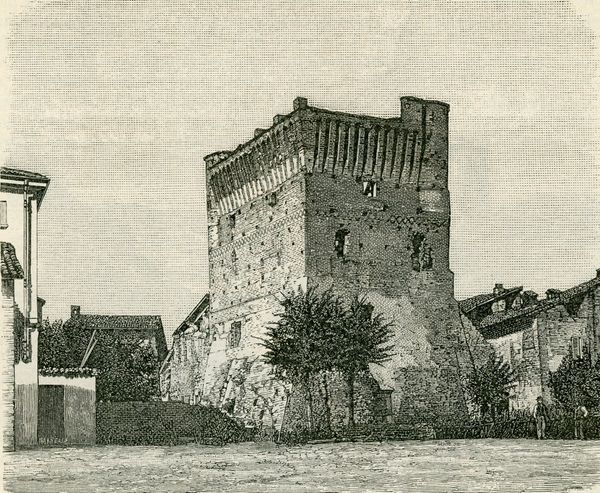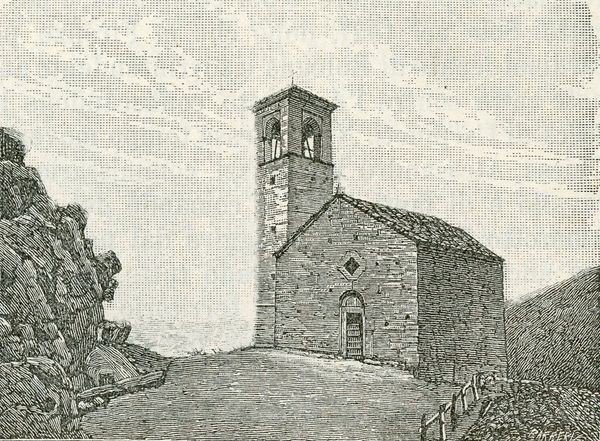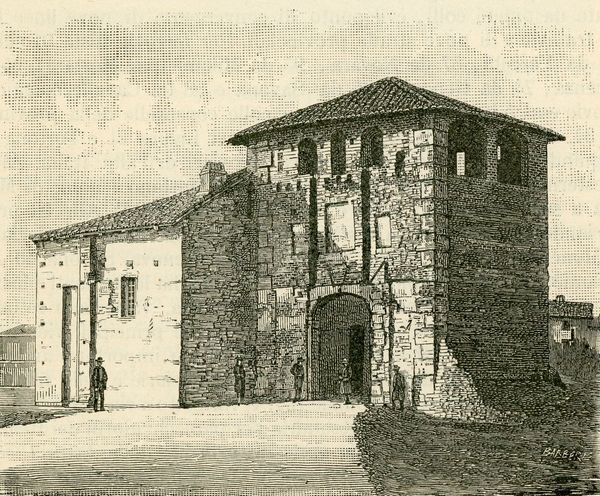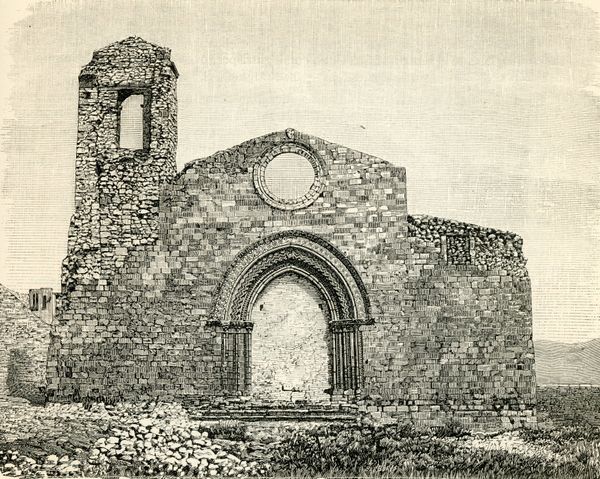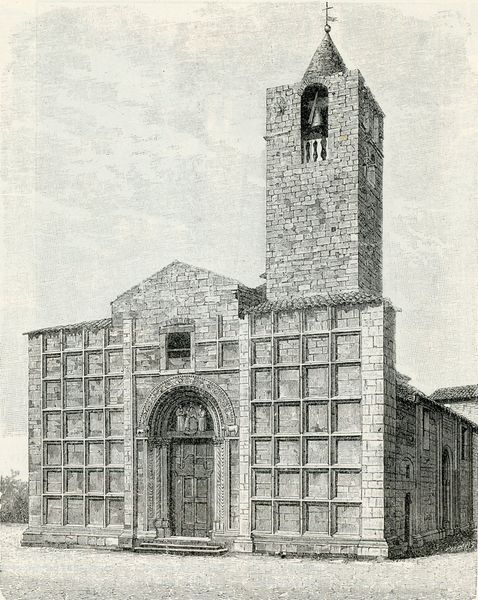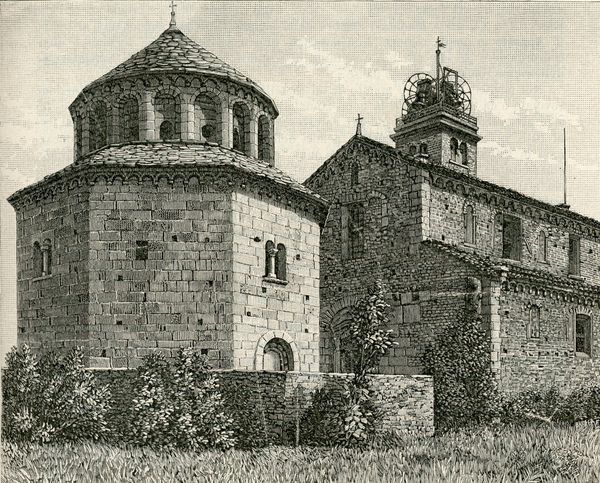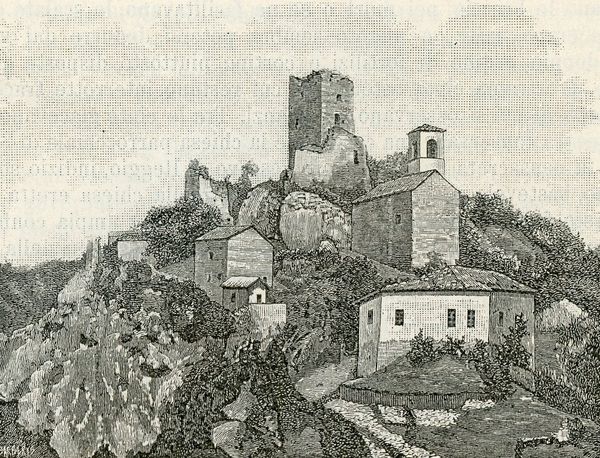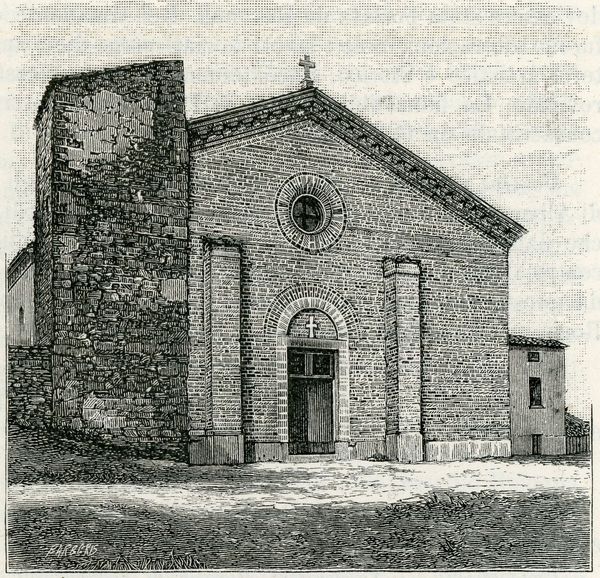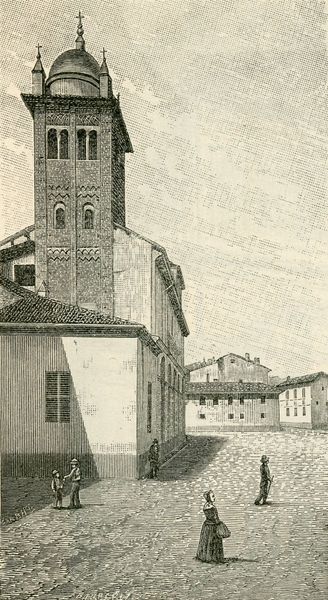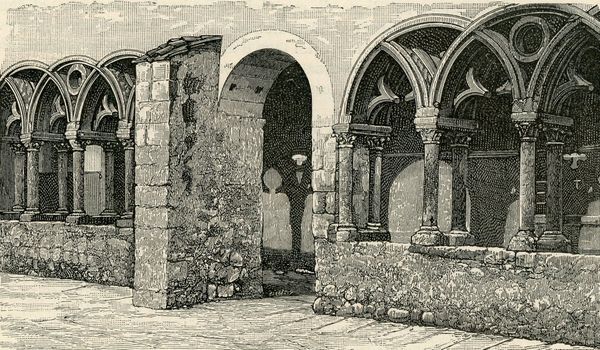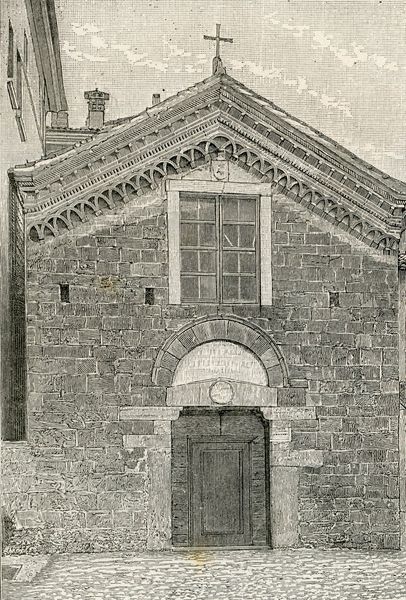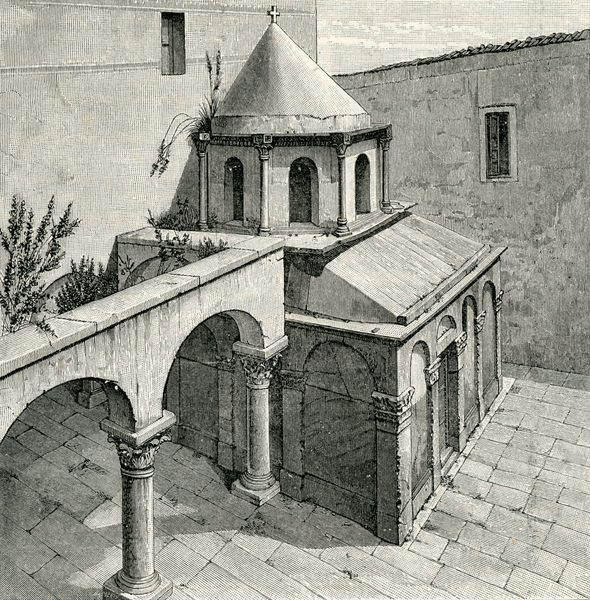
drawing, print, engraving, architecture
#
drawing
# print
#
landscape
#
romanesque
#
geometric
#
architectural drawing
#
line
#
cityscape
#
engraving
#
architecture
#
realism
Copyright: Public domain
Editor: This is Giuseppe Barberis’s "Abside Della Chiesa Dei Santi Giacomo E Filippo," created in 1892. It's an architectural drawing rendered through print and engraving. It really emphasizes the solidity and texture of the stonework. What do you see in this piece? Curator: This print really showcases the labour involved in reproducing architecture. Consider the skilled hand needed to create the initial drawing and then meticulously engrave it onto a plate for printing. The medium becomes integral to how we understand the built structure. Editor: That’s fascinating. So, you’re saying the choice of printmaking elevates the everyday process involved? Curator: Exactly. The process of engraving and printing was also democratizing art to the middle classes through mass reproduction and wider distribution, challenging traditional boundaries of patronage. It also points to the increasing appreciation, perhaps consumption, of historical styles like Romanesque architecture at the time. Editor: So, is this piece critiquing the romantic view of architecture? Curator: Not necessarily critiquing. Perhaps interrogating or showing the tension between craft production for its own sake, versus mass consumption of nostalgic architectural imagery. Consider also the consumption of the landscape the architecture sits within; nature made subordinate through careful arrangement within the engraving process. Editor: I never thought about prints this way! I’m starting to see art not just as an image but as the result of so many production steps. Curator: And these steps reflect larger social forces at play. Reflect on these methods and materials! Editor: Thank you, I will.
Comments
No comments
Be the first to comment and join the conversation on the ultimate creative platform.
